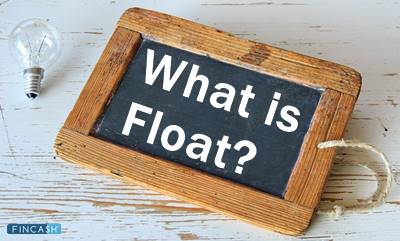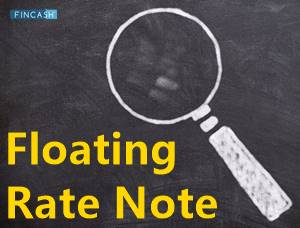
Table of Contents
What is Float?
The term "float" refers to the amount of money held in a company's Bank account between the time a payment is triggered, and the cleared amount is accessible. In simple words, it's time it takes for a bank to make a payment or provide a Receipt or transit time between payment and receipt.

In banking terms, float refers to funds that are counted doubly because of delays in retreating funds from the remunerator and depositing payments to the recipient. Once the payee's bank credits the account forthwith when the cheque is placed, however, the payer's bank has not nonetheless cleared the cheque.
Different Sources of Float
To minimise the length of the cash cycle, the float should be properly handled. Let’s learn about different sources of float:
1. Credit Period Float
It is a common business practice in which consumers are given a specific credit term, say 30 days after receiving the bill or invoice.
2. Bill Mailing Float
It is the time between when the firm sends the bill or invoice and when the client receives it.
3. Cheque Clearing Float
Cheque clearing float is the time lag between when a cheque is deposited and when the funds are accessible for use. These are processed through the clearing system, which takes two days for the cash to be available for spending.
4. Cheque Mailing Float
It is the lag time from the moment the client sends the cheque by mail and the time the cheque arrives at the seller's office.
5. Billing Float
The seller generates an invoice for the items once they are sent to the buyer. It is a formal document in which the client is asked to pay the amount specified in the invoice. The period that elapses between the sale of products and the sending of the invoice is referred to as the billing float.
6. Cheque Processing Float
Cheque processing float is the time lag between the receipt and deposit of the cheque into the bank account at times when the company gets funds in the form of cheques.
Talk to our investment specialist
Types of Float
There are three types of float: collection float, payment float and net float.
1. Payment Float
It is the amount of cheques issued but not paid by the bank at any one moment. The payment float can be used to the business’s benefit in times of financial constraint since it helps to stretch resources in times of need. However, given the harsh conditions about cheque dishonour, loss of reputation, and so on, the firm should exercise extreme caution while playing the float.
2. Collection Float
The period between when debtors or customers make payments and when money is available for usage in the company's bank account is referred to as the collection float. To minimise float, a firm can use strategies such as lockbox systems, zero balance accounts, concentration banking, computerised Cash Management services, and so on, which would enhance a company's cash management Efficiency.
3. Net Float
It is simply the difference between the firm's available bank balance and the balance reported by the firm's ledger account.
How to Calculate Float?
The formula for calculating the float is:
Float = Company’s available balance – Company's book balance
The float represents the net effect of the cheques on the clearing process.
The Bottom Line
Improved processing capabilities due to technological advances have significantly reduced the time required for process verifications, thus reducing the number of outstanding floats. Banks now accept electronic payments, direct deposits, email transfers, and other forms of payment, which have swiftly surpassed paper checks in popularity. As a result, the reduction in float time has cleared the money supply and discouraged payers from taking advantage of the float.
All efforts have been made to ensure the information provided here is accurate. However, no guarantees are made regarding correctness of data. Please verify with scheme information document before making any investment.
You Might Also Like












